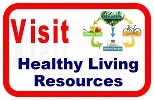Energy is the ability to do work or produce change. What uses energy? Heating, air-conditioning, ventilation, computers, televisions, entertainment systems, appliances, manufacturing, transportation, food storage and preparation and security systems are just some of the things that use energy.
Worldwide energy consumption increased thirty-three percent between 1990 and 2005. People in the United State consume 21.8 percent of the world’s energy, but they represent less than five percent of the worldwide population.
Did you know that the average house is responsible for twice the greenhouse gas emissions as the average car? When power plants burn fossil fuels to make electricity, they release greenhouse gases. The Environmental Protection Agency (EPA) asserts that by using less energy at home, at work and in the community, you can reduce these emissions and fight climate change. Using less energy will also lower your utility bill each month. According to the EPA if every American household took some of the actions below, we could save 18 billion dollars on our energy bills annually and reduce greenhouse gas emissions equivalent to those of 18 million cars.
What can you do at home to be energy smart? Here’s some suggestions from the EPA.
1) MAKE A PLAN. Visit energystar.gov and use EPA’s online tools to help you evaluate your home and make it more energy-efficient. Whether you do it yourself or hire a professional, recommendations from ENERGY STAR can reduce your utility bills by up to 30 percent, make you more comfortable, and protect our environment.
2) CHANGE A LIGHT. Replace existing lighting with ENERGY STAR qualified compact fluorescent light (CFL) bulbs, lamps, ceiling fans, and fixtures. Also look for the ENERGY STAR on decorative light strings for festive occasions.
3) MAKE SAVING ENERGY ENTERTAINING. Make sure your next television has earned the ENERGY STAR. Look for ENERGY STAR qualified components including DVD players, sound systems and set-top boxes.
4) SEAL AND INSULATE. Use caulk, spray foam and weather stripping to seal your home’s outer walls, ceilings, windows, doors and floors. Add insulation to your attic to help keep your home cool in the summer and warm in the winter. Also seal leaks and repair disconnections in your home’s duct system to improve efficiency.
5) HEAT AND COOL EFFICIENTLY. Change your air filter at least once every three months, have your heating and cooling systems tuned-up by a professional annually, and install and properly use a programmable thermostat. When replacing heating or cooling equipment, select models that have earned the ENERGY STAR and ask your contractor if they follow the ENERGY STAR Quality Installation guidelines.
6) ALWAYS LOOK FOR THE STAR. Select products that have earned the ENERGY STAR label. While offering all the features you want, these products also meet strict guidelines to help you save money and protect our environment. Products with the ENERGY STAR label are available in more than 60 product categories.
Be an energy myth buster. Learn why all of the following statements are all false according to the New York State Energy Research and Development Authority (NYSERDA) and the National Energy Foundation (NEF).
1) THERMOSTATS SHOULD NOT BE TURNED DOWN AT NIGHT BECAUSE IT TAKES MORE ENERGY THAN IT SAVES TO REHEAT THE HOME.
False. It takes less energy to reheat or re-cool your home than it does to leave the heat or air conditioner set to a constant temperature.
2) YOU SHOULD LEAVE YOUR CAR RUNNING AT A DRIVE-THROUGH WINDOW BECAUSE IT TAKES MORE ENERGY THAN YOU SAVE TO RESTART THE CAR.
False. If you expect to be idle for more than 30 seconds, turn your car off. Every two minutes that a car idles is the same as driving it one mile.
3) TAKING A BATH USES LESS WATER THAN TAKING A SHOWER.
False. A typical bath uses 30 to 40 gallons of water as compared to an average shower of 5 to 10 minutes, using a high efficiency showerhead, which one of these will use 2.5 gallons per minute – a bath or a shower.
4) TURNING YOUR COMPUTER ON AND OFF THROUGHOUT THE DAY MAY HARM THE COMPUTER.
False. New home electronics are made to turn off and on many times. Any time you can turn it off will save energy.
Each member of your household can do his part to conserve energy and protect the environment. What steps will you take to save energy and save money in your home?





